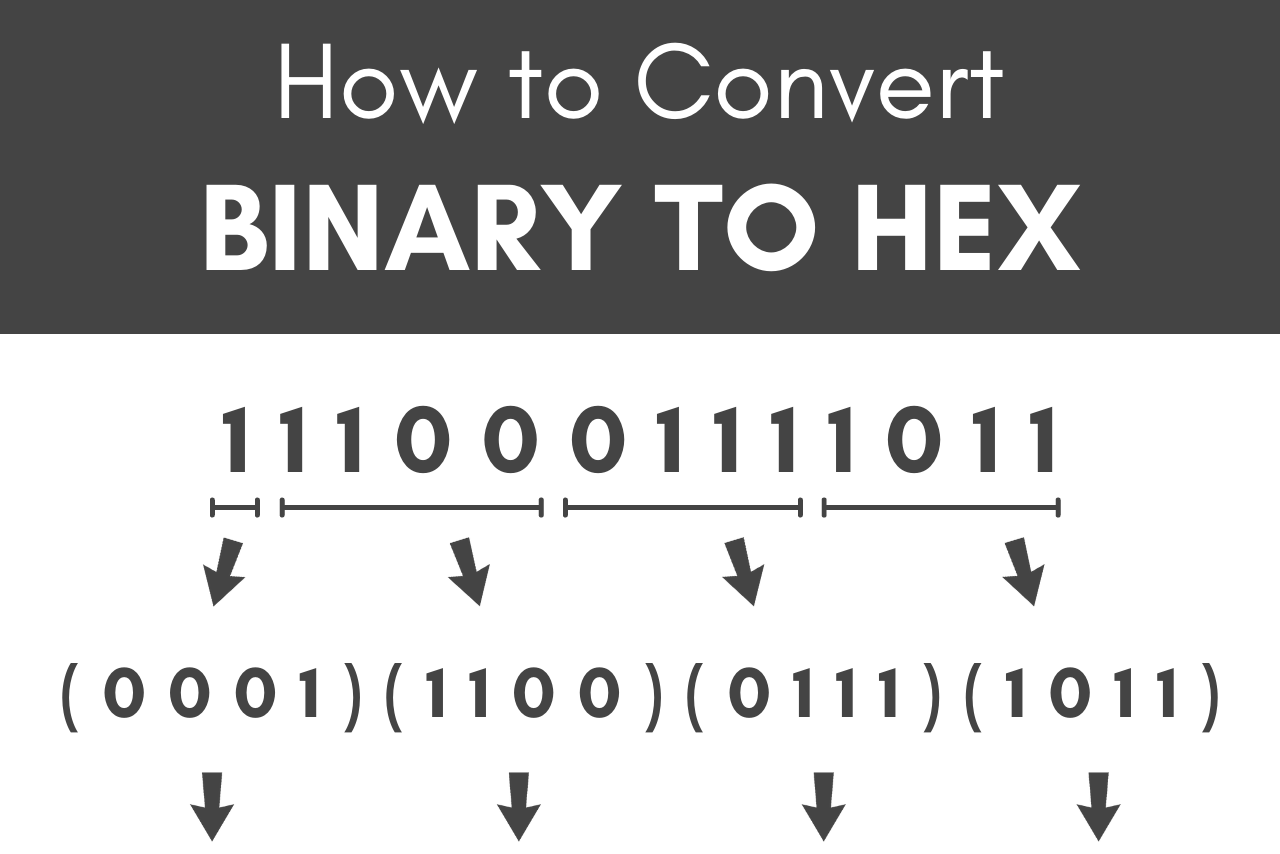How To Convert Hexadecimal To Binary: A Comprehensive Guide
Converting hexadecimal to binary is a fundamental skill in computer science and programming. Understanding this conversion not only enhances your computational skills but also aids in comprehending how data is represented in computers. In this article, we will explore the step-by-step process of converting hexadecimal numbers to binary, provide examples, and share tips to make conversions easier.
Hexadecimal, often abbreviated as hex, is a base-16 numeral system that uses sixteen symbols: 0-9 and A-F. Each hex digit corresponds to a 4-bit binary sequence. Binary, on the other hand, is a base-2 numeral system that uses only two symbols: 0 and 1. This guide will delve into the methods of conversion, practical applications, and the importance of mastering these conversions in various fields.
By the end of this article, you will have a solid understanding of how to convert hexadecimal to binary efficiently. Whether you're a student, programmer, or just a curious learner, this guide is tailored for you. Let’s dive in!
Table of Contents
- 1. Overview of Hexadecimal and Binary
- 2. Methods to Convert Hexadecimal to Binary
- 3. Examples of Hexadecimal to Binary Conversion
- 4. Applications of Hexadecimal and Binary
- 5. Common Errors in Conversion
- 6. Tips for Easy Conversion
- 7. Conclusion
1. Overview of Hexadecimal and Binary
Hexadecimal is widely used in computing and digital electronics because it provides a more human-friendly representation of binary-coded values. Each hex digit represents four binary digits (bits), making it more compact than binary. For instance, the hexadecimal number 'A' represents the binary number '1010'. Understanding the relationship between these two number systems is crucial for anyone working with computers.
2. Methods to Convert Hexadecimal to Binary
2.1 Direct Conversion Method
The most straightforward method to convert hexadecimal to binary is to convert each hex digit directly into its binary equivalent. Here’s how it works:
- Hexadecimal digits: 0-9 are represented as 0000 to 1001 in binary.
- Hexadecimal digits A-F are represented as 1010 to 1111 in binary.
For example, to convert the hex number '1A3F' to binary:
- 1 -> 0001
- A -> 1010
- 3 -> 0011
- F -> 1111
Therefore, '1A3F' in binary is '0001101000111111'.
2.2 Using Decimal as an Intermediary
Another method involves converting the hexadecimal number to decimal first and then converting the decimal number to binary. Here’s the process:
1. Convert hex to decimal. 2. Convert the decimal result to binary.For the hex number '2B', we can convert it as follows:
- 2B = (2 × 16^1) + (11 × 16^0) = 32 + 11 = 43 in decimal.
- Now convert 43 to binary: 43 = 101011.
3. Examples of Hexadecimal to Binary Conversion
Let’s look at a few more examples to solidify your understanding:
- Hexadecimal '4C':
- 4 -> 0100
- C -> 1100
- Binary: 01001100
- Hexadecimal 'FF':
- F -> 1111
- Binary: 11111111
4. Applications of Hexadecimal and Binary
Hexadecimal and binary systems are crucial in various fields, including:
- Computer Programming: Hexadecimal is commonly used in programming languages to represent values, especially in memory addresses and color codes in web design.
- Data Representation: Understanding these conversions is essential for data encoding and decoding.
- Networking: Hexadecimal is often used in networking protocols and addressing.
5. Common Errors in Conversion
While converting hexadecimal to binary, common errors may arise, such as:
- Misremembering binary equivalents of hex digits.
- Forgetting to maintain proper bit length (4 bits for each hex digit).
- Errors in carrying over during the decimal conversion process.
6. Tips for Easy Conversion
Make your conversion process easier with these tips:
- Practice regularly to memorize binary equivalents of hex digits.
- Use charts or tables for quick reference.
- Double-check your work by converting back to hexadecimal.
7. Conclusion
In conclusion, converting hexadecimal to binary is a valuable skill that enhances your understanding of how data is represented in computers. By mastering the methods outlined in this guide, you will be equipped to handle various computing tasks more efficiently.
We encourage you to practice these conversions regularly and explore more about number systems. If you found this article helpful, please leave a comment below or share it with others who might benefit from it!
Thank you for reading, and we hope to see you again for more insightful articles!


